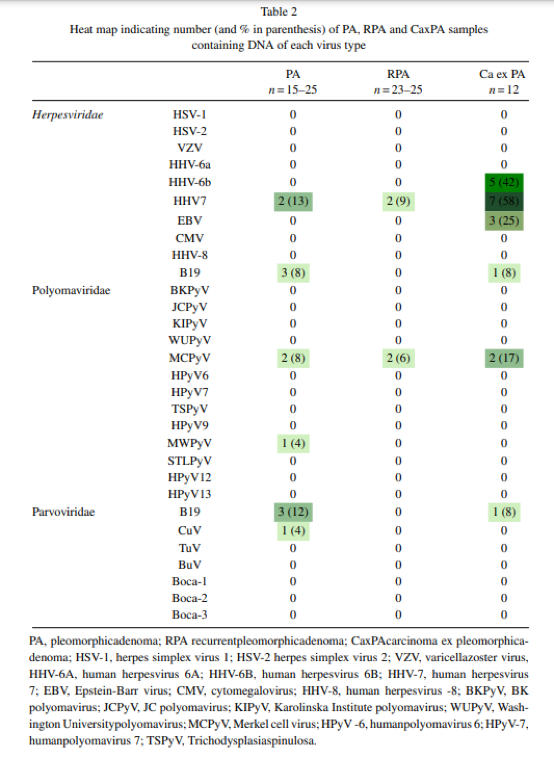HHV-6B and HHV-7 DNA was found in malignant but not benign tumors that derive from common salivary gland adenomas.
In a retrospective cross-sectional cohort study, Jauhiainen et al. (2021) of the Department of Otorhinolaryngology at Helskinki Univesity Hospital examined the presence of nucleic acids of 30 different viruses in formalin-fixed paraffin-embedded salivary gland tumors.

Overall, viral DNA was significantly more frequently detected in a type of salivary tumor called carcinoma ex pleomorphic adenoma (CaxPA). CaxPA is the result of infrequent malignant transformation of the most common type of salivary gland tumor, pleomorphic adenoma.
Herpesvirus family DNA was detected significantly more often in CaxPA (58%) than in PA (13%, p=0.0369) or recurrent pleomorphic adenoma (9%, p=0.0030). Specifically, viral DNA was found in the CaxPA specimens for HHV-7 (58%), HHV-6B (42%) and EBV (25%). The 3 samples that contained EBV DNA also contained DNA from HHV-6B or HHV-7.
The presence of viral nucleic acid in malignant tissue does not prove a causal role in the malignancy, particularly when the cell type in which the viral nucleic acid is present has not been identified.
The mechanisms by which HHV-6 and HHV-7 may produce malignancy has been summarized in a recent review (Eliassen 2018).
Read the full article: Jauhiainen 2021

